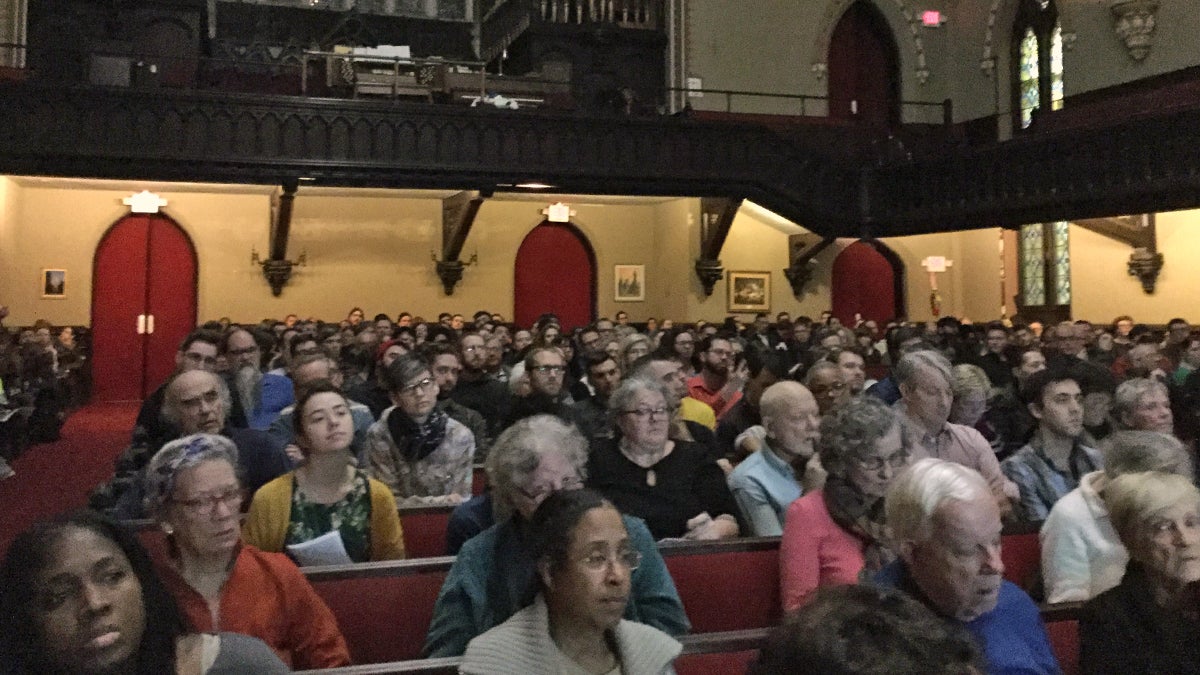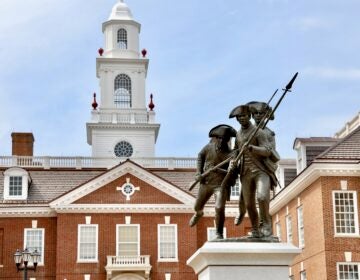Congressional redistricting event draws surprising crowd in Philly

Over 800 people attended a Congressional redistricting event in Philadelphia (Kyrie Greenberg for NewsWorks)
This week, more than 800 people filled Arch St. United Methodist Church, to learn about a subject that you may have missed in civics class — congressional redistricting.
Carol Kuniholm, chair of Fair Districts PA, walked the audience through the process of Gerrymandering, where Congressional districts are redrawn to serve one political party.
Gerrymandering has a long history in the US. It gets its name from a Massachusetts governor back in 1812. Pennsylvania, because it’s swing state where the legislature gets to draw district lines is a prime target. The state is also not growing as quickly as the rest of the country, putting it at risk for losing seats in Congress.
Comparing district maps over the past 50 years, Kuniholm described how political parties have adopted advanced mapping technology, and accelerated redistricting efforts.
There are a few ways districting can divide its voters. One is “cracking” where voters who support one party are split up into slivers in multiple districts so they won’t form a majority in any of them.
“You’ll see some of the poorest communities in the country are drawn into districts where they have absolutely no voice,” said Kuniholm. “Where the legislators are appealing to rich suburbanites or Pennsylvania farmers. They are not thinking about postindustrial urban communities at all.”
Philadelphia, on the other hand, experiences “packing” where the district boundaries are drawn to pack in voters of one party into a few districts as possible where they have an overwhelming majority.
One of the most creative examples is Pennsylvania’s 7th in the suburbs west of Philadelphia, that was redrawn after the 2010 Census. It winds through five counties- and at one point is just 800 feet across.
Crystal Cheaoud is a scientist at Johnson and Johnson who attended the meeting. She says Pennsylvania’s mapping of voters would never pass peer review.
“So if it was science,” said Chaeoud, “You would just take the number of people that you have, the number of districts that you want, and then you just divide them equally into a grid. What other solution could there be?” she said.
In reality, drawing districts, even if not for one party’s gain is complicated. There’s a desire to keep towns or cities whole if possible, but at the same time pay attention to how those lines affect black and Latino citizens under the Voting Rights Act. They have to deal with demographic changes while at the same time not moving lots of towns or cities into new districts.
Fair Districts PA wants an independent redistricting commission, similar to those in California and Arizona. New Jersey has special bipartisan commission set up to deal with redistricting. It typically deadlocks over plans and then needs a tie-breaker member appointed to settle which plan gets adopted.
But bringing about such change in Pennsylvania will be a long shot. The legislature that gets to draw the lines now would have to approve creating such a commission.
WHYY is your source for fact-based, in-depth journalism and information. As a nonprofit organization, we rely on financial support from readers like you. Please give today.




